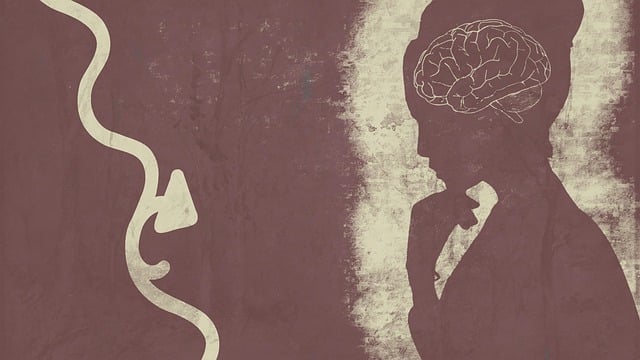The media's portrayal of Superior Panic Disorder and Anxiety Attacks significantly shapes societal perceptions, either reinforcing or challenging stigmas. Inaccurate depictions discourage help-seeking, while responsible media representation through therapy stories can empower viewers to discuss their struggles and adopt effective coping mechanisms. This positive influence extends to healthcare providers, preventing burnout and inspiring mental wellness coaching programs. Integrating real-life experiences and highlighting successful recovery journeys using therapies like CBT destigmatizes mental health issues and encourages trauma support services.
In today’s media landscape, accurate representation of mental health is crucial. This article explores the challenge of stigma and stereotypes in popular culture, focusing on how media portrayal influences societal perceptions. We delve into the impact of misconceptions like those associated with Superior Panic Disorder and Anxiety Attacks, emphasizing the need for therapy-focused solutions. By presenting case studies and strategies for positive change, we aim to empower creators and audiences alike to foster a more understanding and empathetic environment.
- Understanding Mental Health Stigma in Media Portrayal
- The Impact of Stereotypes and Inaccurate Depictions
- Promoting Positive Representation: Strategies for Change
- Integrating Real-Life Experiences: Case Studies and Solutions
Understanding Mental Health Stigma in Media Portrayal

The media has a significant influence on shaping societal perceptions, and its representation of mental health issues can either perpetuate or challenge existing stigmas. Often, mental illness is depicted in a way that reinforces stereotypes, such as portraying individuals with anxiety disorders as weak or dramatic. This misrepresented portrayal contributes to the stigmatization of those seeking help for their mental health.
For instance, showing someone experiencing a panic attack as unable to function in daily life can create a false narrative and discourage others from discussing their own struggles openly. Conversely, media that portrays individuals successfully managing Superior Panic Disorder through therapy and building resilience can be empowering, encouraging viewers to seek support and adopt effective coping mechanisms. Thus, responsible and accurate representation can play a pivotal role in Burnout Prevention Strategies for Healthcare Providers and even inspire the development of Mental Wellness Coaching Programs.
The Impact of Stereotypes and Inaccurate Depictions

The media’s portrayal of mental health issues often reinforces harmful stereotypes and contributes to the stigmatization of conditions like Superior Panic Disorder and Anxiety Attacks. When these disorders are depicted in a simplistic or inaccurate light, it can lead to a profound impact on public understanding and support for those seeking therapy. For instance, common stereotypes often equate anxiety with weakness or overreaction, which not only discredits the severity of the condition but also discourages individuals from reaching out for help.
Such depictions may hinder progress in mental health advocacy by fostering an environment where people are reluctant to discuss their struggles openly. They can also divert attention from effective therapeutic practices like Compassion Cultivation Practices and stress management techniques, which are crucial components of overcoming anxiety disorders. Moreover, the media’s role in shaping public opinion is significant; inaccurate portrayals might discourage empathy and understanding, impeding the efforts of those dedicated to Depression Prevention and promoting mental well-being.
Promoting Positive Representation: Strategies for Change

Media representation plays a pivotal role in shaping public perception about mental health issues, particularly when it comes to conditions like Superior Panic Disorder and Anxiety Attacks. Promoting positive and accurate portrayals can be transformative, enabling better understanding and reducing stigma. One effective strategy is to showcase individuals successfully managing their disorders through therapy and coping skills development. This not only normalizes seeking help but also highlights the effectiveness of therapeutic practices, such as cognitive-behavioral therapy (CBT) which has proven beneficial in treating anxiety disorders.
By featuring characters who demonstrate emotional healing processes and emotional intelligence, media can contribute to a more nuanced conversation about mental illness. Portraying diverse coping mechanisms and personal journeys can help viewers relate and offer valuable insights into the various paths towards recovery. Encouraging open dialogue about these topics ensures that individuals facing similar challenges feel seen, validated, and empowered to seek support, ultimately fostering a more compassionate and informed society.
Integrating Real-Life Experiences: Case Studies and Solutions

In addressing mental illness representation in media, one powerful strategy is to integrate real-life experiences through case studies and solutions. These narratives provide a nuanced understanding of conditions like Superior Panic Disorder and Anxiety Attacks, going beyond stereotypical portrayals. By sharing personal stories, individuals with lived experiences can offer valuable insights into their journeys towards therapy and recovery. This approach not only raises awareness but also destigmatizes mental health struggles by showcasing the diverse paths to healing.
Case studies can highlight effective therapy techniques, such as cognitive-behavioral therapy (CBT), which has proven beneficial for anxiety disorders. Sharing success stories of individuals who have managed their Superior Panic Disorder through CBT or other evidence-based practices can inspire hope and encourage viewers to seek appropriate Trauma Support Services. Additionally, discussing Self-Care Routine Development for Better Mental Health within these contexts normalizes the importance of proactive measures in maintaining mental wellness.
Media has a significant role in shaping public perception about mental health. By promoting positive and accurate representation, we can challenge stereotypes and reduce stigma surrounding mental illness. Integrating real-life experiences into storytelling, as seen in case studies focusing on Superior Panic Disorder and Anxiety Attacks Therapy, offers powerful solutions. Through conscious efforts to depict diverse mental health journeys, media can foster understanding, empathy, and support for those seeking help, ultimately contributing to a more inclusive and compassionate society.














